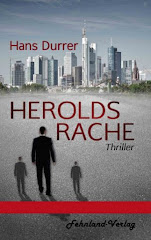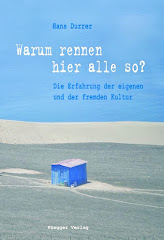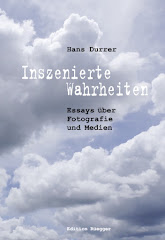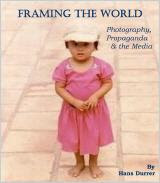Fotografien
sind Inszenierungen.
Selten war
mir dies bewusster als bei den Aufnahmen von Alicia
Olmos Ochoa,die ich letzthin im Internet entdeckte. Und während ich
in den mehr als zwanzig Jahren, in denen ich über Fotografie
geschrieben habe, vor allem an den Geschichten hinter den Bildern
interessiert war, ist für mich heutzutage nur wichtig, ob
mich die Fotos ansprechen oder nicht. Weshalb sie mich ansprechen,
beschäftigt mich nicht; mir genügt zu konstatieren, dass ich mit
einigen Fotos wesentlich mehr Zeit verbringe als mit anderen. Mit den
Aufnahmen von Alicia
Olmos Ochoa ist
es mir so ergangen.
Ein
ausgeprägter Blick für Stimmungen ist ihr eigen, ihr Sinn für
Komposition ist offensichtlich. Für mich strahlen ihre Bilder so
recht eigentlich etwas Magisches aus – sie laden zum Träumen
ein, führen dazu, dass sich mir eine von meinem Bewusstsein
unabhängige Realität einstellt.
Ich weiss
nicht, ob andere diese Bilder auch so sehen; ich weiss auch nicht, ob
die Fotografin sie so sieht wie ich sie sehe. Ich halte es für eher
unwahrscheinlich, doch ausschliessen will ich es natürlich nicht.
Bei Büchern
habe ich die Erfahrung gemacht, dass wir alle anders lesen. Die
Gründe, weshalb mir ein Buch gefällt, sind selten dieselben, die
andere, die dasselbe Buch schätzen, angeben. Weshalb ich denn auch höchst erstaunt war, dass Chris, ein Chinese aus Kanada, Richard, ein
Brasilianer, und ich, ein Schweizer – alle drei verschieden im Alter – , in "Krieg und Frieden" genau die
gleiche Stelle, in der Fürst Andrej verletzt auf dem Schlachtfeld
liegt, am beeindruckendsten fanden: “Über ihm war nichts als der
Himmel, der hohe Himmel, der zwar nicht klar, aber trotzdem
unermesslich hoch schien. Graue Wolken glitten ruhig dahin. Wie
still, wie ruhig, wie feierlich, dachte Fürst Andrej, gar nicht so,
wie ich eben dahergestürmt bin, gar nicht so, wie wir rennen und
schreien und kämpfen, und wie sich der Franzose und der Artillerist
mit wütenden, entsetzten Gesichtern den Wischer zu entwinden suchten
– ganz anders ziehen die Wolken über diesen hohen, unendlichen
Himmel dahin. Wie kommt es, dass ich früher niemals diesen Himmel
gesehen habe? Wie glücklich bin ich, dass ich ihn endlich sehe. Ja!
Alles ist eitel, alles ist Lug und Trug, ausser diesem unendlichen
Himmel. Es gibt nichts, nichts ausser ihm … Und auch er ist wohl
nicht … nichts ist … ausser der Stille … der Ruhe … Gott sei
Dank!”
I see,
sagt der Engländer, wenn er vorgibt, etwas verstanden zu haben.
Damit dieses Sehen möglich ist, muss man sich die Zeit nehmen,
hinzuschauen. Bei den Fotografien von Alicia
Olmos Ochoa lohnt es sich.
























